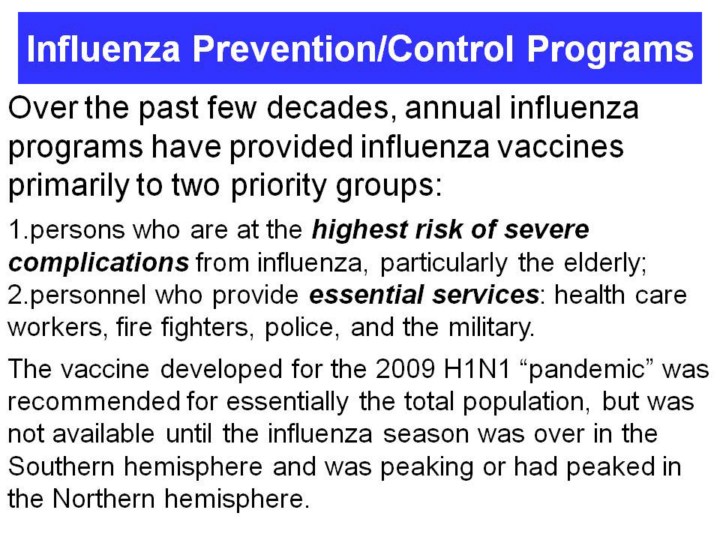 |
Public
health measures for the prevention of community spread of influenza viruses
are
of limited effectiveness. Influenza vaccines are estimated to be 70-80%
effective in either preventing influenza infection or at least reducing the
severity of an influenza infection if the viral antigens in the vaccine are
similar to the prevalent circulating virus. A decision to develop a global
influenza vaccine program requires: (1) detection and laboratory
confirmation of a “new” influenza virus; and (2) some indication that this
new virus is spreading rapidly in human populations. The time from
recognition of a new influenza virus and documentation of its spread takes
at least a few months, and then the time required to develop and make
millions of doses of a new flu vaccine also requires a few more months. The
decision to develop a global flu vaccine program for the 2009 H1N1 virus was
made as rapidly as possible but still sufficient supplies of the 2009 flu
vaccine were not available until the flu season was over in the Sothern
hemisphere and had peaked or was peaking in the Northern hemisphere.
|
